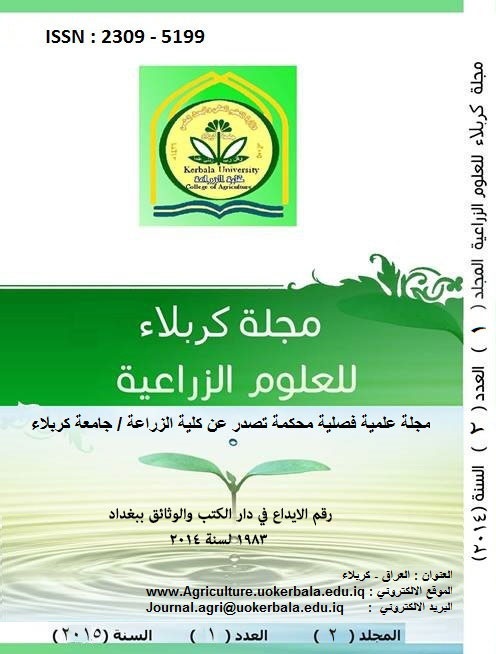Effect of treatment with some enzymes on rheological properties of wheat flour
DOI:
https://doi.org/10.59658/jkas.v3i1.524Keywords:
Enzymes, Rheological properties, Wheat flourAbstract
The present study was aimed to improve rheological properties of weak wheat flour by treating with a mixture of oxidizing, binding and polysaccharide hydrolyzing enzymes. At the beginning, the oxidizing and binding enzymes were individually added to the flour using different concentrations. Maximum resistance of extension was obtained by the concentrations of 5, 83.3 and 0.133 unit/100gm of flour for glucose oxidase, peroxidase and transglutaminase, respectively. These enzymes exhibited no effect on starch gelation and maximum viscosity temperatures.
Treatment of the flour with a mixture of the above mentioned concentrations of enzymes resulted in decreased extensibiliy accompanied with a large increase in extension resistance (942 B.U.) as compared to the control sample (420 B.U.). In order to oppose this effect, xylanase (13.7 unit/100 gm flour) was added. This treatment resulted in retardation of dough properties and increasing its viscosity. Extensograph area had decreased to 49 cm2 which was very low and unsuitable for loaf production. To decease this effect, the concentrations of the four enzymes were decreased to 1, 50, 0.033 and 10.3 unit/100gm flour, respectively. Resistance was dropped to 525 B.U. and extensibility to 146 mm. The addition of amylase (86.7 unit/100 gm flour) resulted in improving rheological properties of the dough. Viscosity had raised to 598 B.U. Resistance and extensibility became 506 B.U. and 157 mm, respectively. Handling of the dough became easy. The last treatment was considered to be the best for improving rheological properties of the flour.
Downloads
Published
How to Cite
Issue
Section
License
Copyright (c) 2016 Copyright (c) 2024 is the Author's article. Published by the Journal of Kerbala for Agricultural Sciences under a CC BY 4.0 license

This work is licensed under a Creative Commons Attribution 4.0 International License.
Licensing Terms
All articles are published under a Creative Commons License and will be directed to the Creative Commons Attribution 4.0 International License (CC BY 4.0) That permits use, distribution, and reproduction in any medium, provided the original work is properly cited. This license also allows the work to be used for commercial purposes.
Use by both non-commercial and commercial users
This content is licensed under a Creative Commons Attribution 4.0 International (CC BY 4.0) license, permitting use by both non-commercial and commercial users. Individual users may access, download, copy, display, and redistribute the articles to colleagues, as well as adapt, translate, and text- and data-mine the content, subject to the following conditions:
- The author's moral rights, including the right of attribution and the right to protect their work from derogatory treatment, are respected.
- Where content in the article is identified as belonging to a third party, users must ensure that any reuse complies with the copyright policies of the owner of that content.
- If the article content is reused for research or educational purposes, users should maintain a link to the appropriate bibliographic citation, including the DOI and a link to the published version on the journal's website.

